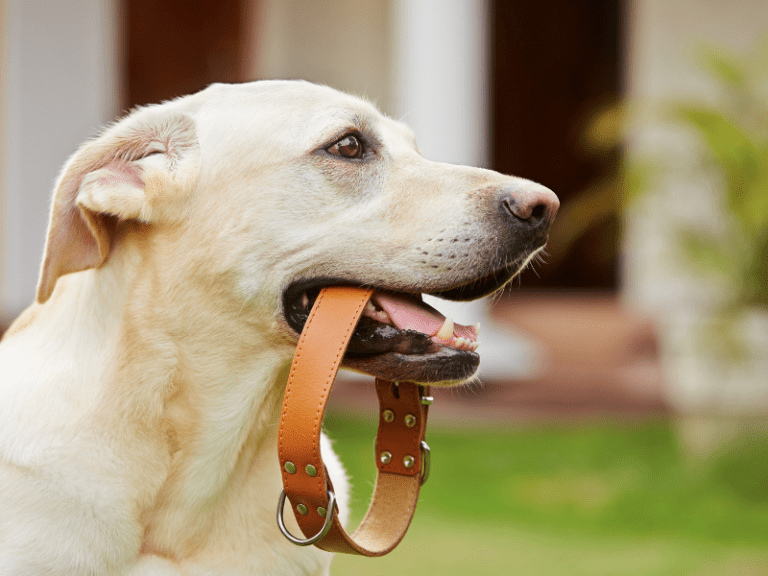Decoding Dog Body Language: A Personalized Guide to Avoiding Bites
FULL DISCLOSURE: The links I share in this course ARE my affiliate links. This means I earn a commission, at no extra cost to you. In fact, sometimes you’ll get a discount or free credits just FOR using my link. 🙂
Hey there! Are you eager to strengthen the bond with your loyal four-legged friend? Understanding their body language is key to unlocking the secrets of their thoughts and emotions.
As fellow dog lovers, we know how much joy, loyalty, and unconditional love our canine companions bring to our lives. That's why we've crafted this personalized guide, tailored just for you, to help you decode their body language and avoid potential bites.
Join us as we explore the fascinating world of canine communication, unraveling the subtle cues and signals dogs use to express their feelings. By the end of this guide, you'll be well-equipped to prevent misunderstandings and foster a safe, harmonious relationship with your beloved furry pal.
So, without further ado, let's dive into the wagging world of dog body language!
Understanding Your Dog's Body Language
Every dog is unique, and so is the way they communicate. By paying close attention to your dog's body language cues, you can understand their emotions and needs. Here are some common signals to watch for:
Relaxed and happy Behavior:
When your dog is relaxed, you'll notice a slightly wagging tail, a soft gaze, and a loose body posture. They may even appear to be smiling, with their tongue hanging out. This means that your pup is comfortable and content in their environment.
At times, the dog may stretch out or roll onto their back, signaling that they trust you and feel secure. These moments provide excellent opportunities for you to bond with your pup through gentle petting, grooming, or simply enjoying each other's company in a peaceful setting.
Playful Behavior:
A playful pup may exhibit a play bow, lowering their front half while keeping their back half up. Their tail will wag energetically, and they may bark excitedly. This is an invitation for you to engage in play.
Playtime is essential for your dog's mental and physical well-being, so make sure to engage in activities that your pup enjoys, such as fetching, tug-of-war, or simply running around together.
Remember to give your dog breaks during play to avoid overexertion and always be mindful of their size and age when choosing toys and games.
Fearful or anxious Behavior:

If your dog is feeling fearful or anxious, they may cower, tuck their tail between their legs, or display the whites of their eyes (whale eye). They may also lick their lips, yawn, or show other signs of stress. These signals indicate that the dog is uncomfortable or frightened.
It's essential to identify and address the potential triggers of your dog’s fear or anxiety, such as loud noises, unfamiliar environments, or new people. Provide a safe space for your pup to retreat to, and gradually desensitize them to stressors using positive reinforcement and patience.
If needed, consult a professional dog trainer or behaviorist for guidance.
Aggressive Behavior:
Aggressive body language in dog’s can include raised hackles, bared teeth, growling, and a stiff or tense body posture. Their ears may be pinned back, and they might stare intently. This is a clear warning sign that the dog is ready to defend themselves if necessary.
When you notice these signs, it's crucial to remain calm and avoid any actions that could further provoke your dog. Give them space and time to calm down, and remove any potential triggers if possible.
If the aggressive behavior becomes a recurring issue or poses a danger to others, consult a professional dog trainer or behaviorist to help address and manage the problem.
Avoiding Bites from Dog’s

Now that you understand more about dog’s body language, here are some tips to prevent bites:
Observe and respect the dog’s body language:
Always observe a dog’s body language and respect their signals. If they display fearful or aggressive behavior, give them space and avoid making sudden movements or loud noises.
Acknowledging the dog's emotions and respecting their boundaries will help foster trust and create a more secure environment for both of you.
Remember that every dog has unique needs and limits; by paying attention to their body language, you'll be better equipped to understand and meet those needs.
Approach cautiously:
When meeting new dogs, approach them slowly and at an angle rather than head-on. This non-threatening approach allows the dog to feel more at ease and reduces the likelihood of an aggressive response.
Extend your closed fist gently toward the dog, allowing them to sniff your hand before attempting to pet them. This gives the dog a chance to familiarize themselves with your scent and offers them the choice to engage or retreat.
Supervise interactions:
Supervise all interactions between children and dog’s, as kids may not understand dog body language and may inadvertently provoke a bite. Teach children appropriate ways to approach and handle dogs, such as avoiding rough play, respecting the dog's personal space, and using gentle petting techniques.
By creating a safe environment for both children and dog’s, you'll be fostering positive experiences that lead to lasting bonds.
Do not disturb:

Avoid approaching dog’s when they are eating, sleeping, or caring for puppies, as they may feel threatened and react aggressively. Dogs can become protective of their resources or offspring, so it's essential to respect their space during these times.
If you need to approach a dog in these situations, do so calmly and announce your presence with a gentle voice to prevent startling them.
Be aware of your body language:
Stand tall, avoid direct eye contact, and use a calm, confident voice when interacting with any dog. This will show them that you are not a threat.
Dogs are highly perceptive and can sense your emotions through your body language and tone of voice. By maintaining a composed and confident demeanor, you'll be helping the dog feel more at ease and secure in your presence.
Learn the signs of escalation:
Dog’s may exhibit warning signs before a bite, such as stiffening their body, growling, or snapping. Recognizing these signals and giving them space can prevent a bite from occurring.
When you notice any of these signs, it's essential to assess the situation and remove potential triggers or stressors, if possible. Always prioritize safety for both you and your dog by giving them the space they need to calm down and regroup.
Understand Dog’s Body Language

Understanding your dog's body language is crucial for building a strong bond and ensuring their well-being. By paying attention to their signals and respecting their boundaries, you can prevent misunderstandings and bites, ensuring a safe and harmonious relationship with your beloved canine companion.
Remember to always approach new situations with patience and empathy, and both you and your dog will enjoy a more rewarding and fulfilling partnership.
Join Our Pack
Are you interested in learning more about building a strong bond with your canine companion? Join our email list for exclusive content, tips, and expert advice on understanding and responding to your dog's needs.
By signing up, you'll receive the latest information on dog behavior, training techniques, and overall well-being, delivered straight to your inbox. Don't miss out on this invaluable resource – become a part of our community today and take the first step towards a deeper connection with your beloved pup!
Let's work together to create a happier, healthier, and more harmonious relationship with our furry friends. Sign up now and embark on this journey with us!







